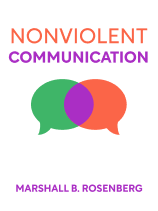

This article is an excerpt from the Shortform book guide to "Nonviolent Communication" by Marshall B. Rosenberg. Shortform has the world's best summaries and analyses of books you should be reading.
Like this article? Sign up for a free trial here .
What are NVC feelings and needs? How can you identify the needs that underlie your own and other people’s feelings?
NVC feelings and needs are central to Marshall Rosenberg’s approach to non-violent living. In NVC, feelings and needs are tied together to express the idea that all negative feelings derive from unmet needs.
Read about NVC feelings and needs and why it’s important to express them in unison.
NVC Feelings and Needs
NVC feelings and needs are the core tenets of nonviolent living. Recognizing and expressing your feelings helps others to understand you, but it doesn’t give them much guidance on how to respond. For that, you need to connect the feelings to your underlying needs. In NVC, feelings and needs are tied together to express the idea that every feeling arises from a particular need that is or isn’t being met.
Identifying the need underlying a certain feeling helps you get clear on what your goals are for this communication, but it’s not always easy to identify the needs underlying our feelings since this is such a new idea for most of us. For reference, here is a list of the categories of universal needs that all humans share as well as some specific examples:
- Autonomy (the right to choose your own goals and values in life)
- Celebration (to celebrate happy life events and to mourn our losses)
- Integrity (authenticity, creativity, meaning, self-worth)
- Interdependence (acceptance, empathy, love, respect, support)
- Play (fun, laughter)
- Spiritual Communion (beauty, inspiration, peace)
- Physical Nurturance (air, food, water, shelter)
Once you’re aware of your needs, express them out loud along with your feelings. For example, you could say, “I’m feeling nervous to tell you something because I need your acceptance” or “I’m feeling exhausted because I need to rest.”
Expressing needs can be terrifying in a culture that actively discourages us from expressing vulnerability. Instead, we often express our needs indirectly by judging or diagnosing others (for example, instead of saying, “I felt hurt when she yelled at me,” we might say, “She’s crazy”). This can make people feel criticized or attacked, which puts them on the defensive and makes them even less likely to recognize and fulfill our needs. As uncomfortable as it may be, being open about our needs makes it easier for other people to respond to us positively.
Gender roles can make this kind of vulnerability even harder. The “ideal woman” is the ultimate caretaker and sacrifices her own needs to meet those of others. For women, admitting to having any needs at all often feels like a failure. This is doubly true for women with partners or children, who are expected to give up their own needs the moment they become wives or mothers.
Stages of Emotional Liberation
When people begin to focus on identifying and expressing their feelings and needs the NVC way, they often pass through three stages: “emotional slavery,” “the obnoxious stage,” and “emotional liberation.”
- In stage 1 or “emotional slavery,” we feel responsible for other people’s emotions and engage in “people pleasing” to keep everyone around us happy (often at our own expense). If we can’t “fix” other people’s negative emotions, it feels like a personal failure and creates overwhelming distress. To cope with that distress, we often put distance between ourselves and the other person by labeling them as “needy.”
- In stage 2 or “the obnoxious stage,” we’re beginning to wake up to the reality that trying to meet everyone else’s needs at the expense of our own is making us miserable. In this stage, we might overcompensate by adopting a “not my problem” attitude and refusing to meet any needs of other people (hence the “obnoxious” label).
- In stage 3 or “emotional liberation,” we’re able to provide genuine care and empathy to others while still meeting our own needs. We take full responsibility for our own feelings and no longer feel responsible for the emotions of other people. Meeting our own needs first allows us to give to others purely out of compassion rather than guilt or obligation. In other words, focusing on ourselves first allows us to help others more wholeheartedly than if we prioritized their needs over our own.
- You can think of this as the emotional equivalent of airplane safety demonstrations that emphasize putting your own oxygen mask on before assisting others. If you pass out from lack of oxygen (or burn out by not meeting your own needs in general), you won’t be able to help anyone else.

———End of Preview———
Like what you just read? Read the rest of the world's best book summary and analysis of Marshall B. Rosenberg's "Nonviolent Communication" at Shortform .
Here's what you'll find in our full Nonviolent Communication summary :
- How nonviolent communication lets you have more compassion for yourself
- Why nonviolent communication is the key to fostering authentic connections with others
- The 4 steps to expressing yourself with empathy towards others






